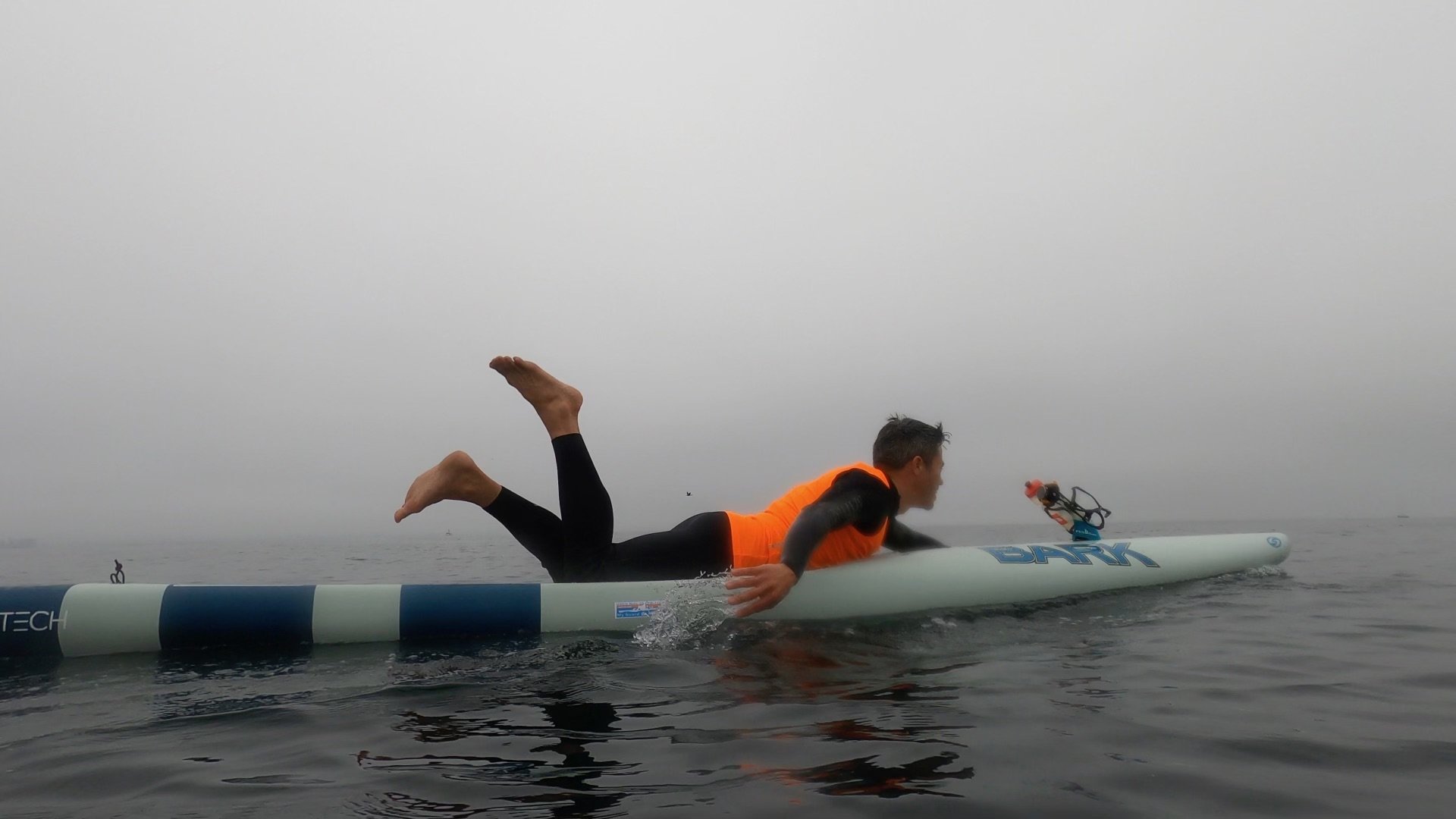My dear husband Steve, on the left in the photo, is as neurotic about fitness as I am, however he tends to find prefer sports that either (a) are hard to get to, or, (b) are intensely grueling.
Steve’s primary passion is surfing. Anyone who lives in Seattle knows that there is no place to surf nearby. In fact, the closest break to us is a 2+ hour drive away, which makes it logistically difficult to make a quick decision to go when the waves look good.
To stay “surf fit”, he has used swimming as his primary workout during the work week. Unfortunately when pools closed due to the pandemic, Steve became a bit desperate.
Enter Prone Paddle Boarding
Prone paddle boarding is a lesser known, older step-sibling to Stand Up Paddle Boarding.
Imagine: you are either lying on your belly, or balancing precariously on your knees while paddling as if being chased by a shark. For a really long time. Your arms are really tired, your head feels like it is going to fall off, and you just want to take a break… but if you stop paddling you are victim to the current.
Sounds fun, right?!?
Apparently Steve thinks so. He and two buddies are headed down to California to compete in the Catalina Classic on August 28. So while I have been ramping up my training for the Marine Corps Marathon, Steve has been logging in the miles out on Puget Sound to train up for this 32 mile slog from Catalina Island to Manhattan Beach in LA.
During his training, Steve has been either paddling, a highly repetitive stress on the shoulders, or swimming, another highly repetitive stress on the shoulders. Fortunately, he has managed to stay injury free with just a few aches and pains that were managed with a few free PT sessions (benefits of being married to me).
I think Steve would love to continue to paddle as intensely after this race. Keeping his shoulders healthy is vital to his continued paddling. But, given he is not so young anymore, it will be wise to find a way to break down the mechanics of prone paddle boarding, and ensure a strengthening program that will support the primary muscle groups used during the activity.
Speaking of shoulders, I have had an influx of patients that are dealing with shoulder pain that is limiting their participation in Sport and interrupting life outside of sport, like sleep. Click here for a few exercises that can help shoulder health, and stay tuned for some more posts about ways to work on overhead mobility, whether it is for a repetitive stress like paddling, or for improving your overhead squat technique.
But… let’s get back to
Doesn’t he look like he is having fun? They call the “pain stick” for a reason. Wish him and his buddies luck on August 28!




